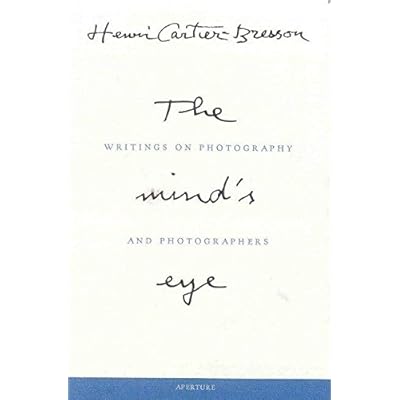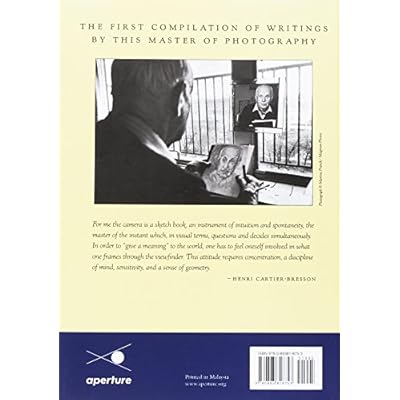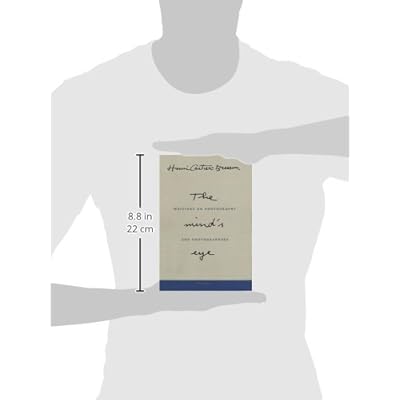Henri Cartier-Bresson: The Mind's Eye: Writings on Photography and Photographers
Category: Books,Arts & Photography,Photography & Video
Henri Cartier-Bresson: The Mind's Eye: Writings on Photography and Photographers Details
From Library Journal Supremely accomplished and influential French photographer Cartier-Bresson guided the evolution of the photographic medium while creating an enormous body of work. His photographs of people, famous and obscure, always contain a strong psychological component deriving from formally perfect compositions and a temporal ambivalence that characterizes only the most powerful static images. This slight book contains short essays by Cartier-Bresson along with some less interesting aesthetic epigrams and tributes to fellow artists. This is the first published collection of his writings, though large chunks are taken from books he published in the 1950s and 1960s. And while there's not a great deal of his writings to be collected, what's here is pithy and laconic without being sententious. His artistic philosophy is well captured by his landmark 1952 essay "The Decisive Moment," contained here, probably the most poetically instructive evocation of the field photographer's art yet written. This is a useful and important title from one of the defining sets of eyes in the cumulative visual record of the 20th century. Recommended for academic and large public libraries.DDouglas F. Smith, Oakland P.L., CA Copyright 2000 Reed Business Information, Inc. Read more About the Author Henri Cartier-Bresson was born in France in 1908. He studied painting and then began to photograph in the early 1930s. After escaping from prison camp in 1943, he made portraits of artists, covered the liberation of Paris and filmed a documentary on the return of war prisoners. In 1947, the year he had his first show at MoMA, he also founded Magnum Photos with Robert Capa, George Rodger and David Seymour. Not long after, he began in earnest the life of a traveling photographer, working in India, Burma, Pakistan, Indonesia, China, Japan, Mexico and Cuba. His first, defining book "The Decisive Moment" was published by Teriade in 1952. By the late 60s, he had almost ceased making reportage to re-embrace his first passion, drawing. Cartier-Bresson created his Foundation in Paris in 2003, and passed away in 2004. Read more

Reviews
I think it would have been a tall order for Henri to write down the information you would need to reach his level of photography. There are some exceptional documentaries on YouTube for free that you could take advantage of by watching to get some insight from him in his own spoken words and examples. This short read is his collection of writings that brings to a point photography of the day as it was for him. When he mocks the idea of the golden rule being etched onto a lens I sort of grin at the thought of grid lines appearing in modern DSLR cameras to guide in the use of rule of thirds. All this being said - in written words Henri conveys what he's thinking in some of the more general senses of his time with photography where the camera is his sketchbook and where you can try to find another 1000 words in the photos themselves ;) Color photography has come a long long way in the digital world so at a first read you might wonder why he avoided the use of it and made a point to write about it. Therefore, you have to read his writings with the respect he is due for his total mastery of photography. Make no mistake - he was a master. He didn't take the time back then to write about the formula it takes for him and how you can use this formula to get the same results with any camera. He gives you something more intimate in fact - his raw emotions of the world he lived in and how the camera reached out into the world as an extension of himself. Each person has his or her own art inside them and if you understand and appreciate the very fundamentals of photography then you have taken one more step in trying to reach your goals of an artist perhaps. If you read this book with these things in mind you will take something away from it :)




